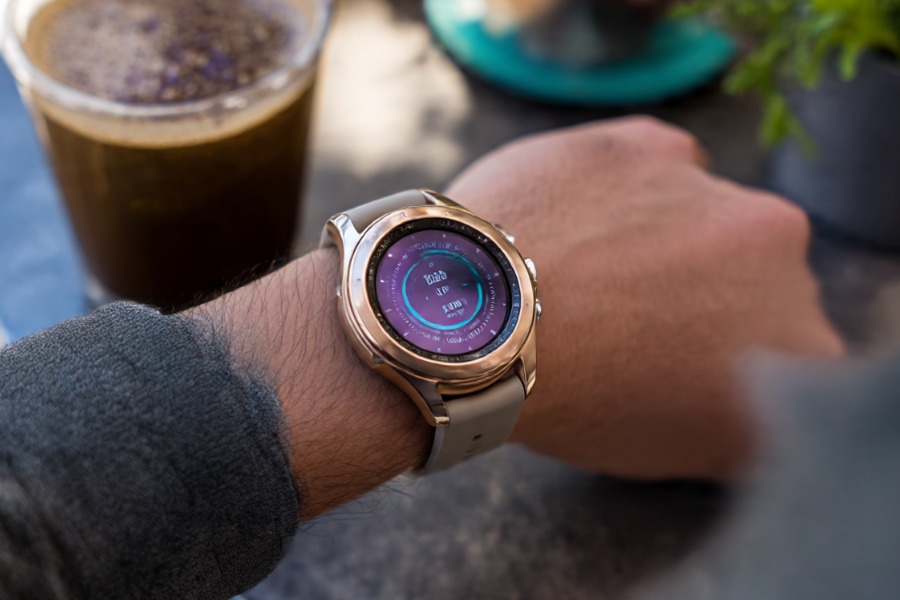Samsung Galaxy Watch8 Brings Nutrition Tracking to Your Wrist
thenewsbuzz October 24, 2025 27
Samsung has taken a big step in wearables by pioneering the ability to change a complex lab-based nutrition analysis into an easy wrist scan. The new Antioxidant Index on the Galaxy Watch8 measures carotenoid status— a well-known biomarker of dietary health— in seconds, setting the new standard for recent technology in India and beyond.
A Key Change in Nutritional Surveillance
The idea was simple yet disruptive: what if your smartwatch could measure your nutrition in real-time? Samsung’s ingenuity changes early stages of nutrition research into meaningful health indicators. Consumers can now assess their antioxidant levels— important molecules that defend the body from oxidative stress and aging— by simply using the scan of a thumb.
Dr. Hyojee Joung, of Seoul National University, states that the key to long-term health is managing your antioxidants, “If we don’t manage our antioxidants, it may lead to an accumulation of reactive oxygen species in our bodies, leading to a greater risk of chronic diseases like cardiovascular diseases, diabetes, and cancers.”
This research and health inequities became the catalyst for Samsung’s years of research, aiming to bring nutrition surveillance into daily life.
Shrinking Lab-Quality Technology to a Smaller Scale
The toughest challenge Samsung engineers faced was scaling down Raman spectroscopy technology, which is typically used in laboratories and is used to measure carotenoids, down into a size that can be used in a sensor that fits in a watch. Traditional machines are large and expensive given their size and therefore not practical for everyday use.
After almost 7 years of research and countless prototypes, Samsung achieved what seemed impossible not long ago. The Galaxy Watch8 employs multi-wavelength LED technology, combined with a custom photodetector array, which can provide accurate carotenoid readings in a small form factor.
“We made it happen by merging reflectance spectroscopy with a collection of low-cost, high-intensity LEDs,” shared Jinyoung Park, from Samsung’s Digital Health team. LEDs correlate to a wider range of wavelengths compared to laser systems, and when connected with Samsung’s algorithms in real time, these devices provide consistent, tailored health information.
Making Health Technology Available for Everyone
Samsungs’s aim went beyond being innovative; it made technology available for everyone. To provide accurate measurements on all skin tones, engineers developed the scan to be run from the fingertip, where there is little disruption from melanin.
After extensive testing at Samsung Medical Center that included testing with hundreds of participants, the technology has been tested and refined for all types of users.
The addition of light fingertip pressure while scanning overall, contributed to the accuracy by minimalizing blood flow disruption.
This method, centered in inclusivity, assures that the Antioxidant Index provides consistent answers regardless of skin tone or way of living, anywhere in the world.
Understanding the Antioxidant Index
Carotenoids are pigments that naturally exist in fruits and vegetables. The human body cannot produce carotenoids. Thus the concentrations indicate how much fruits and vegetables the person is consuming. The Antioxidant Index of the Galaxy Watch8 puts you into one of three categories depending on your carotenoids levels:
- Extremely Low: More than 50% of the World Health Organization’s suggested daily amount of fruit and vegetables of 400g.
- Low: 50% – 100%
- Good: More than 100%
As per Dr. Joung, “The carotenoids in the skin can tell us about longer term funny dietary patterns or eating behavior. So, if someone made a dietary change, for example, they decided to eat more vegetables, it might take a week to 2 weeks one to be able to see that dietary change.”
The indicator takes into account lifestyle factors like stress, sleep, and exercise–creating a thorough representation of overall wellness. Coupled with the Galaxy Watch8’s sleep tracking feature and bioimpedance vascular assessment process, users can now see various dimensions of health.
A More Intelligent Tomorrow for Preventive Healthcare
Professor Yoonho Choi from Samsung Medical Center asserts that the Antioxidant Index marks the beginning of a new era in personal wellness. “Wearable devices that encourage better nutrition can potentially reduce the risk of cancer and every disease associated with aging,” he said.
With this innovation, Samsung is bridging nutrition science with everyday health management.
The ability to measure antioxidants from your wrist isn’t only an advancement of technology; it has the potential to revolutionize health care.
With the Antioxidant Index, the Galaxy Watch8 completely redefines the capabilities of wearables—bringing us a powerful combination of technology and wellness that is sure to shape the future of preventive healthcare.
The Galaxy Watch8 from Samsung has turned science fiction into reality by allowing real-time nutrition tracking. This first-ever feature in the industry is an important achievement for the recent technology in India and around the world, opening the door to a new era of innovations in wearable products that focus on health.








**synaptigen**
synaptigen is a next-generation brain support supplement that blends natural nootropics, adaptogens
**vitta burn**
vitta burn is a liquid dietary supplement formulated to support healthy weight reduction by increasing metabolic rate, reducing hunger, and promoting fat loss.
**nitric boost**
nitric boost is a dietary formula crafted to enhance vitality and promote overall well-being.
**glucore**
glucore is a nutritional supplement that is given to patients daily to assist in maintaining healthy blood sugar and metabolic rates.
**wildgut**
wildgutis a precision-crafted nutritional blend designed to nurture your dog’s digestive tract.
**pinealxt**
pinealxt is a revolutionary supplement that promotes proper pineal gland function and energy levels to support healthy body function.
**energeia**
energeia is the first and only recipe that targets the root cause of stubborn belly fat and Deadly visceral fat.
**boostaro**
boostaro is a specially crafted dietary supplement for men who want to elevate their overall health and vitality.
**prostabliss**
prostabliss is a carefully developed dietary formula aimed at nurturing prostate vitality and improving urinary comfort.
**potentstream**
potentstream is engineered to promote prostate well-being by counteracting the residue that can build up from hard-water minerals within the urinary tract.
**breathe**
breathe is a plant-powered tincture crafted to promote lung performance and enhance your breathing quality.
**hepato burn**
hepato burn is a premium nutritional formula designed to enhance liver function, boost metabolism, and support natural fat breakdown.
**hepatoburn**
hepatoburn is a potent, plant-based formula created to promote optimal liver performance and naturally stimulate fat-burning mechanisms.
**cellufend**
cellufend is a natural supplement developed to support balanced blood sugar levels through a blend of botanical extracts and essential nutrients.
**prodentim**
prodentim is a forward-thinking oral wellness blend crafted to nurture and maintain a balanced mouth microbiome.
**neuro genica**
neuro genica is a dietary supplement formulated to support nerve health and ease discomfort associated with neuropathy.
**flowforce max**
flowforce max delivers a forward-thinking, plant-focused way to support prostate health—while also helping maintain everyday energy, libido, and overall vitality.
**revitag**
revitag is a daily skin-support formula created to promote a healthy complexion and visibly diminish the appearance of skin tags.
yvimd7
**sleeplean**
sleeplean is a US-trusted, naturally focused nighttime support formula that helps your body burn fat while you rest.
**memorylift**
memorylift is an innovative dietary formula designed to naturally nurture brain wellness and sharpen cognitive performance.
Okay, ggpanalocasino.com is the right site for online casino. With how convenient you get to play them makes it worth playing. I was able to deposit and withdraw easily. ggpanalocasino
K33game… never heard of it. Guess I’ll go check it out. Maybe I’ll find the next game I’m addicted to. k33game
Yo, 7lggame is pretty cool. Got some decent games and the site’s easy enough to navigate. Solid choice if you’re looking for something new. Check it out: 7lggame
Tigrinhobet, meu camarada! Achei um site show de bola pra dar uns palpites. Fácil de usar e as odds são daquelas que enchem o bolso! Vale a pena conferir tigrinhobet.
gamebet03 is where I find my fix for some quick betting action. Straightforward site. Quick bets here: gamebet03
gamebet03 is where I find my fix for some quick betting action. Straightforward site. Quick bets here: gamebet03